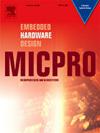面向RISC-V空间处理器的同步硬件性能监视器的设计与实现
IF 2.6
4区 计算机科学
Q3 COMPUTER SCIENCE, HARDWARE & ARCHITECTURE
引用次数: 0
摘要
收集关于CPU内程序执行的统计信息的能力在所有计算领域都是至关重要的,因为它允许描述程序的计时性能。这种能力在安全关键型软件系统中更为重要,在这些系统中,分析软件时序需求以确保程序的正确操作是强制性的。此外,为了正确地评估和验证这些系统的额外功能属性,除了计时性能之外,CPU上还有许多其他可用的统计数据,例如与其资源利用率相关的统计数据。在本文中,我们展示了一个性能测量单元(PMU),也称为硬件性能监视器(HPM),集成到RISC-V板载计算机(OBC)中,由我们的研究小组设计用于空间应用。监视技术的特点是采用一种新颖的方法,即触发的事件不会立即计数,而是通过管道传播,以便它们的注释与执行的指令同步。此外,我们还演示了在进程中使用该PMU来描述处理器的执行模型。最后,作为PMU提供的统计数据的一个示例,展示了在RISC-V OBC上运行CoreMark和Dhrystone基准测试获得的结果。本文章由计算机程序翻译,如有差异,请以英文原文为准。
Design and implementation of a synchronous Hardware Performance Monitor for a RISC-V space-oriented processor
The ability to collect statistics about the execution of a program within a CPU is of the utmost importance across all fields of computing since it allows characterizing the timing performance of a program. This capability is even more relevant in safety-critical software systems, where it is mandatory to analyze the software timing requirements to ensure the correct operation of the programs. Moreover, in order to properly evaluate and verify the extra-functional properties of these systems, besides timing performance, there are many other statistics available on a CPU, such as those associated with its resource utilization. In this paper, we showcase a Performance Measurement Unit (PMU), also known as a Hardware Performance Monitor (HPM), integrated into a RISC-V On-Board Computer (OBC) designed for space applications by our research group. The monitoring technique features a novel approach whereby the events triggered are not counted immediately but instead are propagated through the pipeline so that their annotation is synchronized with the executed instruction. Additionally, we also demonstrate the use of this PMU in a process to characterize the execution model of the processor. Finally, as an example of the statistics provided by the PMU, the results obtained running the CoreMark and Dhrystone benchmarks on the RISC-V OBC are shown.
求助全文
通过发布文献求助,成功后即可免费获取论文全文。
去求助
来源期刊

Microprocessors and Microsystems
工程技术-工程:电子与电气
CiteScore
6.90
自引率
3.80%
发文量
204
审稿时长
172 days
期刊介绍:
Microprocessors and Microsystems: Embedded Hardware Design (MICPRO) is a journal covering all design and architectural aspects related to embedded systems hardware. This includes different embedded system hardware platforms ranging from custom hardware via reconfigurable systems and application specific processors to general purpose embedded processors. Special emphasis is put on novel complex embedded architectures, such as systems on chip (SoC), systems on a programmable/reconfigurable chip (SoPC) and multi-processor systems on a chip (MPSoC), as well as, their memory and communication methods and structures, such as network-on-chip (NoC).
Design automation of such systems including methodologies, techniques, flows and tools for their design, as well as, novel designs of hardware components fall within the scope of this journal. Novel cyber-physical applications that use embedded systems are also central in this journal. While software is not in the main focus of this journal, methods of hardware/software co-design, as well as, application restructuring and mapping to embedded hardware platforms, that consider interplay between software and hardware components with emphasis on hardware, are also in the journal scope.
 求助内容:
求助内容: 应助结果提醒方式:
应助结果提醒方式:


